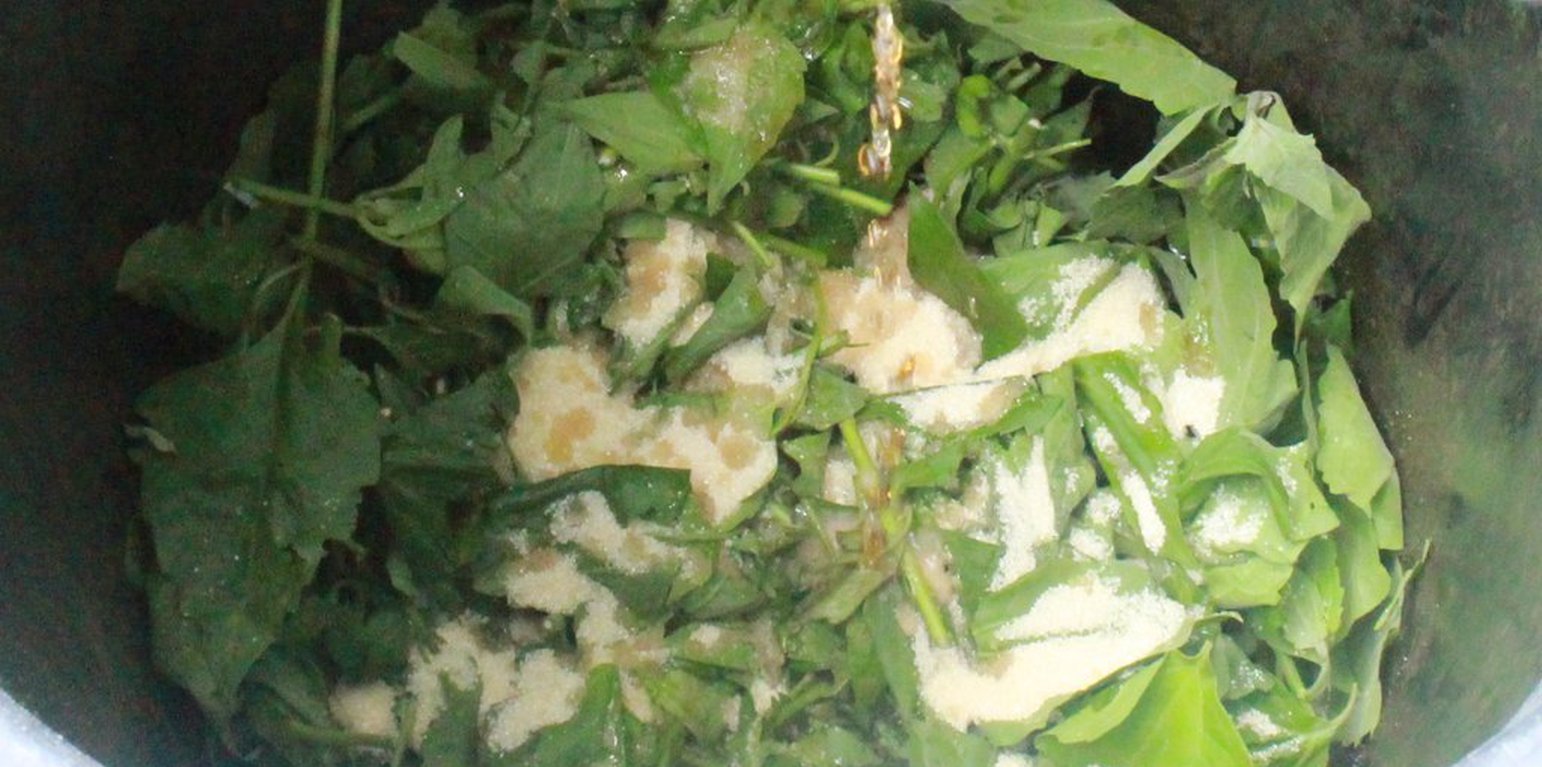



Farmers have practiced household gardening for a considerable period of time in order to increase food security and generate an income. However some farmers have experienced difficulties in cultivating vegetables due to various challenges such as the soil type, for example clay or compacted soil, ineffective water seepage as well as the soil’s low nutrient content making it unsuitable for agricultural purposes. Consequently, the problems that the farmers often faced included vegetables of inferior quality, outbreaks of diseases, as well as surges of insects and pests which typically reduce yields by approximately 30%. In order to increase production and cultivate at a preferable period of time, farmers often applied chemical fertilizer in combination with animal compost. However the production outputs and quality of the produce were not up to expectations if compared to agricultural practices that do not involve the use of chemicals. It has been noted that vegetables grown with the use of chemical fertilizers cannot be kept for a long period of time as they tend to spoil more quickly, despite the increase in production yields. In 2015 an International Fund for Agriculture Development (IFAD) Programme introduced a technique to produce effective micro-organisms (EM) and encouraged people to use these to improve the nutrient content of the soil and thereby enhance the quality of home garden vegetables as well as other potential crops. The farmers gained an interest in EM and began to produce it according to the programme’s instructions. The production of EM is actually relatively easy, and farmers can use organic waste from vegetables such as Chinese mustard (Brassica juncea), morning glory and water spinach mixed with 1kg of sugar and 0.5 kg of molasses (if available, or it can be excluded, but it should be available at an agricultural produce outlet). Firstly the organic waste should be sliced/chopped into small pieces and then sugar and molasses are added which are then all mixed in a 20 litre container. Then a one metre long stick should be used to mix all the ingredients and the container lid should then be sealed properly. Once these steps have been completed, the EM production container should avoid sunlight and be stored in the shade so as to ensure the quality of EM. After one week the container can be opened to mix the ingredients again and then it can continue to remain in the shade for another month. Thereafter, EM mixture is ready for use and one table spoon should be added to 10 litres of water, and once this has been mixed well it can be applied to the vegetables in the home garden by using water cans. Watering involves pouring the solution from the leaves to the stems or to the roots of the vegetables. After the application of the EM solution it was noted that there were more earthworms around the vegetable plots and also that there was an increase in soil moisture and nutrients. Furthermore it was also noted that the soil was previously relatively white and compacted and not black and porous allowing for good water seepage. In this way water is absorbed by the soil in the plot rather than running off over the surface. Plant pathogens and pests/insects such as red ants and leaf worms was reduced. As a result, the vegetables grew well with a good average weight, and there was an increase in both the quality and the yield. As a comparison, in the past farmers used to be able to harvest 5-6 kg per plot, but now they are capable of securing 12-15kg per plot. However, weeds still remain a problem and these include Eleusine indica and thorny grass which compete for nutrients with the crops. It is a challenge for the farmers to control these weeds including other natural vegetables.
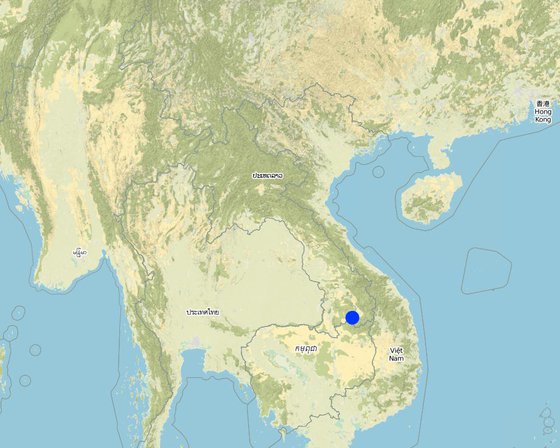
地点: Phouvong district,, Attapeu province, 老挝人民民主共和国
分析的技术场所数量: 单一场所
技术传播: 均匀地分布在一个区域 (approx. < 0.1 平方千米(10 公顷))
实施日期: 2015; 不到10年前(最近)
介绍类型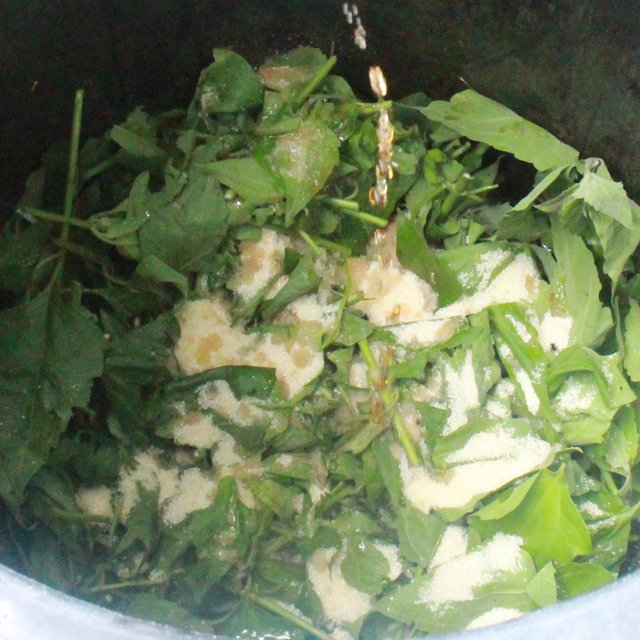
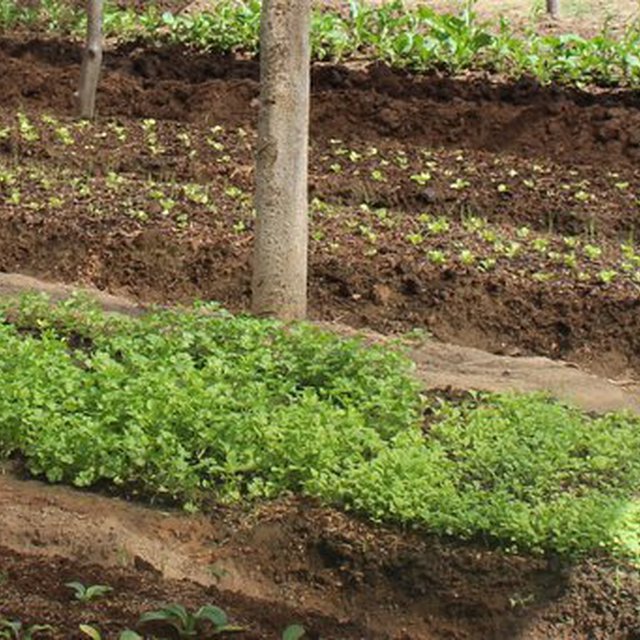




技术规范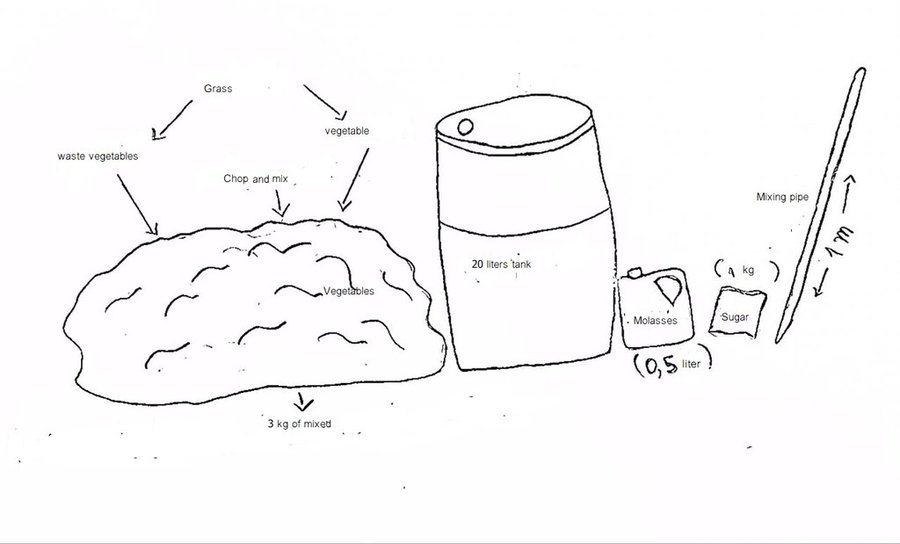
作者:Fadavanh Souliya
This bio-extracting technique can be done easily and farmers can use local waste materials such as cabbage, pineapple, spinach and so on. With the following ingredients: 3 kg of vegetables, 1 kg of sugar, 0.5 liters of molasses. Then bring the vegetables to chop thoroughly and then bring the sugar and mixed molasses into a 20 liter tank prepared and mixed together, the area of the bio-extracted technique is 2 meters x 2 meters, Then put about 1 meter of wood to mix it and close the barrel to keep it in the air when practicing all the techniques and then we will bring a bio-extracted tank to a sunny shade to preserve the quality of detergent, Then one more week, we can open the tank for all the ingredients again, so we can do this for a period of time, up to a month, and then add the biological extracts 1 spoon / 10 liters of water to mix and then irrigate the vegetable.
|
|||||||||||
| 对投入进行具体说明 | 单位 | 数量 | 单位成本 (Kip) | 每项投入的总成本 (Kip) | 土地使用者承担的成本% |
| 劳动力 | |||||
| Labor | person | 1.0 | 50000.0 | 50000.0 | 100.0 |
| 设备 | |||||
| Knife | peice | 1.0 | 20000.0 | 20000.0 | |
| irrigation tank | peice | 1.0 | 30000.0 | 30000.0 | |
| Bucket | peice | 2.0 | 25000.0 | 50000.0 | |
| 植物材料 | |||||
| Molasses | kg | 1.0 | 8000.0 | 8000.0 | 100.0 |
| Sugar | liter | 2.0 | 7000.0 | 14000.0 | 100.0 |
| 技术建立所需总成本 | 172'000.0 | ||||
| 对投入进行具体说明 | 单位 | 数量 | 单位成本 (Kip) | 每项投入的总成本 (Kip) | 土地使用者承担的成本% |
| 劳动力 | |||||
| Labor | person | 1.0 | 50000.0 | 50000.0 | 100.0 |
| 设备 | |||||
| Knife | piece | 1.0 | 20000.0 | 20000.0 | |
| irrigation tank | piece | 1.0 | 30000.0 | 30000.0 | |
| tank | piece | 1.0 | 25000.0 | 25000.0 | |
| 植物材料 | |||||
| Molasses | kg | 1.0 | 7000.0 | 7000.0 | 100.0 |
| Sugar | liter | 2.0 | 8000.0 | 16000.0 | 100.0 |
| 技术维护所需总成本 | 148'000.0 | ||||
SLM之前的数量: 5-6 kg/plot of vegetables
SLM之后的数量: Increased 12-15 kg/plot of vegetables
Strong and sound plants. Due to reduced plant pathogens and pests/insects such as red ants and leaf worms.
Increase and diversity of different type of vegetables for home consumption and selling.
Water is absorbed by the soil in the plot rather than running off over the surface.
soil was previously relatively white and compacted and now it is black and porous allowing for good water seepage